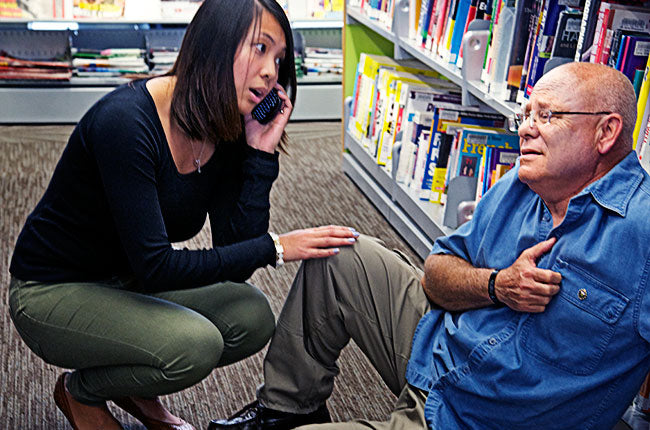Emergencies can happen when we least expect them, and having the right first aid supplies at your disposal can make all the difference. Whether it’s a minor injury or a more severe situation, being prepared with a well-stocked first aid kit can provide peace of mind. In this comprehensive guide, we’ll explore the essential first aid supplies you should have at home and why they are vital, as well as how to create your own First Responder Bag or IFAK kit.
The Importance of Being Prepared
Accidents happen, and knowing how to respond effectively can save lives. By keeping essential supplies at home, you're ensuring that you are ready to act in an emergency. Being prepared not only helps you deal with minor injuries but also equips you to provide critical assistance for more serious situations.
Understanding Basic First Aid Essentials
First aid equipment can range from basic items like adhesive bandages to more advanced supplies like emergency oxygen setups. Here’s a breakdown of what constitutes a well-stocked first aid kit.
Core Components of a First Aid Kit
- Adhesive Bandages: Various sizes for minor cuts and abrasions.
- Gauze Pads and Roll: To cover larger wounds and help stem bleeding.
- Adhesive Tape: For securing dressings and bandages.
- Antiseptic Wipes: For cleaning wounds and preventing infections.
- Antibiotic Ointment: To apply on cuts to help prevent infections.
- Sterile Gloves: Important for personal protection when administering aid.
- Scissors: For cutting tape, gauze, and clothing away from wounds.
- Instant Cold Packs: Useful for reducing swelling from sprains or strains.
- Pain Relievers: Over-the-counter medications can help manage pain.
Building Your Own First Responder Bag or IFAK Kit
Creating a personalized First Responder Bag or an IFAK kit allows you to tailor your supplies to your specific needs and potential emergencies. Here’s how to go about it:
Selecting a Suitable Bag
Your first responder bag needs to be durable and large enough to accommodate your supplies. Look for bags that are specifically designed for emergency response, with multiple compartments that can organize your gear easily.
Key Items for Your First Responder Bag
- Expanded First Aid Supplies: In addition to basic items, include more specialized tools such as tourniquets and splints.
- Medical Reference Guide: Having a quick reference can assist in complex situations.
- Emergency Blanket: To keep someone warm if they are in shock.
- CPR Mask: An essential item for performing CPR safely.
Gear Bags Stocked with First Aid Essentials
Your goal should be to have your gear bags stocked with supplies that can address a range of injuries. Assess your family’s needs and any common risks you might face in your environment to determine what specialty items to include.
Special Considerations
It's also important to consider specific circumstances or environments. For example, if you enjoy hiking or other outdoor activities, you might want to include additional supplies that are tailored for outdoor emergencies.
Special Supplies for Outdoor Activities
- Snake Bite Kit: For those hiking in areas where snakes may be present.
- Sunburn Relief Gel: Helps treat minor burns from sun exposure.
- Bug Bite and Sting Kit: To reduce irritation from insect bites.
Utilizing Emergency Oxygen
While a standard first aid kit may not include emergency oxygen, it's important to consider it if you have family members with known respiratory issues. Understanding how to use an emergency oxygen setup can also be crucial in situations where breathing becomes compromised.
When to Use Emergency Oxygen
Emergency oxygen can be utilized in many scenarios:
- Asthma attacks
- Severe allergic reactions
- Cardiac emergencies
- Respiratory distress
Regularly Checking and Maintaining Your First Aid Supplies
Having a stocked first aid kit or First Responder Bag is only half the battle; you need to maintain and regularly check your supplies. Set a calendar reminder every few months to inspect your supplies. Replace any expired items and restock what has been used.
Creating a Maintenance Schedule
- Check the expiration dates of medications and ointments.
- Replace any band-aids that have been used as well as other supplies.
- Review your gear and make any adjustments based on recent family activities and potential risks.
Training for Emergencies
Having supplies on hand is essential, but knowing how to use them is just as important. Consider taking a first aid and CPR course to enhance your skills and better prepare you for potential emergencies.
Finding a Course Near You
Many organizations offer first aid certification courses, including local community centers, hospitals, and the Red Cross. Upon complete training, you’ll feel more confident in your ability to respond to emergencies effectively.
Be Your Family's Lifeline
Being prepared with essential first aid supplies and knowing how to use them can have a significant impact during emergencies. By stocking your home with a comprehensive first aid kit, assembling a detailed First Responder Bag, and committing to regular training, you become an invaluable resource for your family in times of need. Remember, the best time to prepare is now—don’t wait until an emergency strikes!
As you proceed, ensure that your first aid supplies are easily accessible for all household members. Having them in a known location can save critical seconds when responding to emergencies. Additionally, consider involving your family in the debate over what supplies are necessary, fostering a culture of preparedness that extends beyond just having the right gear.
So take action today, get organized, and build your first aid supplies. With the right tools at your disposal, you're not just keeping your family safe—you're empowering yourself to make a difference when it matters most!


